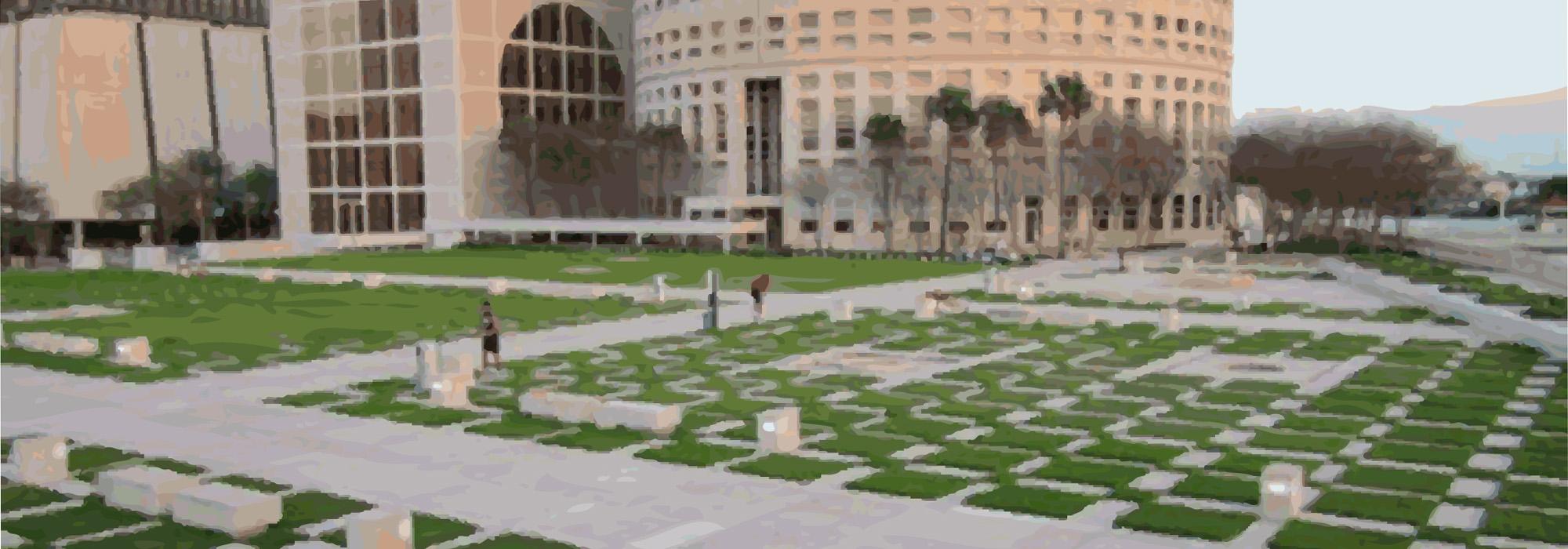It Takes One: Sue Thompson
I was born in Philadelphia, Pennsylvania, and remember visiting area historic sites and estates, such as Washington 's Crossing and Longwood Gardens, with my parents when I was a child. I also remember running wild with my sisters in our local park, Pennypack Woods. While I was born a Keystone, I grew up in Indiana and consider myself a Midwesterner in heart and soul, if not by address. I received an undergraduate degree in landscape architecture from Purdue University and a master's degree at the Graduate School of Design, Harvard University. I have been in private practice as a landscape architect for sixteen years and during that time have focused my practice on creating and preserving spaces for people whether they are historic gardens, waterfront master plans, urban parks, multi-use trail systems, Hope VI housing developments, sustainable communities or wetland restorations. I enjoy being involved in the community and work as a volunteer to design and install community gardens in my new home of Sarasota, Florida.
How would you define a cultural landscape?
A cultural landscape is a space that has helped to define us as a people in a particular time and place. It is a traceable, physical link of who we were that has influenced and enriched who we have become. It provides insight into people's thoughts and lives, while forging continuity in the things we all share.
Why did you get involved in the landscape that was threatened in your community?
I have been an admirer of Dan Kiley's work since my first visit to the three Kiley gardens in Columbus, Indiana as part of a high school field trip and know what a treasure the restored Kiley gardens are for that community. I was fortunate enough to meet Dan Kiley while attending graduate school and to hear about how he approached his work. I took a studio class with Peter Schaudt, who worked with Mr. Kiley on the design of the NationsBank Plaza Park. As a result, I had an understanding of this project, its significance in the realm of modern gardens and its unique integration with the architecture before my recent move to Florida.
I became involved with the NationsBank Plaza Park by attending a lecture in Tampa, Florida on the preservation of modern gardens by Charles Birnbaum of the National Park Service and Cultural Landscape Foundation. His lecture was inspiring and thought provoking, but he really struck a cord when he mentioned that the NationsBank Plaza Park (the Kiley designed garden in downtown Tampa) was threatened. During the lecture, my husband whispered, "How are you going to save this garden?" Although, I didn't have an answer, I had already decided this was something I wanted to do, despite the fact I had just relocated to the area.
In speaking with Mr. Birnbaum after the lecture, he encouraged me to submit the garden for consideration to the Florida Trust's Ten Most Endangered Sites for 2005, which I did and the garden received this designation in the spring of 2005. This first positive step was the catalyst to save the garden locally. Because of this designation, I met people in the historic and design communities who felt as I did and we began to work together toward saving Kiley's design for the NationsBank Plaza Park.
How did your understanding of this landscape change as a result of your advocacy efforts?
While I had an understanding of the NationsBank Plaza Park, it was as a static icon and not as a real project. After spending time learning about the history of the garden's development by reviewing construction plans, speaking with designers involved in the project's construction and exploring the site, I have come to an awareness of the genius of the design and the many challenges that this unique, urban garden, built atop a parking garage, presents. I have come to know the garden's strengths and weaknesses in a way I never could by looking at slides or reading about it in a book. I believe this has made me a better advocate for the garden.
Did the understanding of others change as well? If so, how?
There were many people in the community, including City staff and design professionals, who only knew partial information about the NationsBank Plaza Park design, construction and subsequent neglect. The first mission was to provide accurate information to the community and to dispel any misinformation. To accomplish this, we scheduled a two-day public symposium in Tampa. We invited City officials, Harry Wolf, FAIA, and Peter Schaudt, ASLA, who both worked with Dan Kiley on the NationsBank Plaza Park, to participate in an evening lecture and early morning building and garden tour. During the presentation and the garden walk, the speakers were given the opportunity to explain their design process, the integration of the buildings and garden and discuss the construction and maintenance. Throughout the two-day event, the public asked questions and requested information from the designers. This well-attended event did much to educate the public and our volunteer group about the various facets of the project and the role the designers and the City played in the development of the garden. By providing the information from those who were involved in the project from inception to construction, the community was made aware that Kiley's involvement in the project was limited to the preparation of the schematic design and a separate design team prepared and implemented the construction detailing. As a result of the information that came out of the symposium, the community began to realize the complexity of the garden, to re-evaluate the public criticism of Kiley's design and to see the value in saving the NationsBank Plaza Park.
Recently, the Mayor of Tampa, who had been opposed to saving the garden, met with our volunteer group to provide her support for the garden and asked us to form a non-profit association to assist in the funding of the garden's restoration. This important change of community opinion is due to the seeds of information that were planted at the symposium and the efforts of many individuals, including Roger Grunke, John Howey, Chris Vela, Anne Vela, Phillip Crosby, Linda Saul-Sena and Becky Clarke, who have donated countless hours and financial support.
What is the message that you would like to give our readers that may inspire them to make a difference?
Regardless of the outcome, it is always worth struggling for something you believe. Even if you are only one person, you can accomplish much. When someone takes the initiative, people see there is something they can do to help and the process begins. In my case, I was introduced to many creative people, whom I may never have met save for the common love of this Kiley garden. It is due to the volunteer efforts of the members of our newly formed non-profit, "Friends of Kiley Garden," that this design has been spared.







